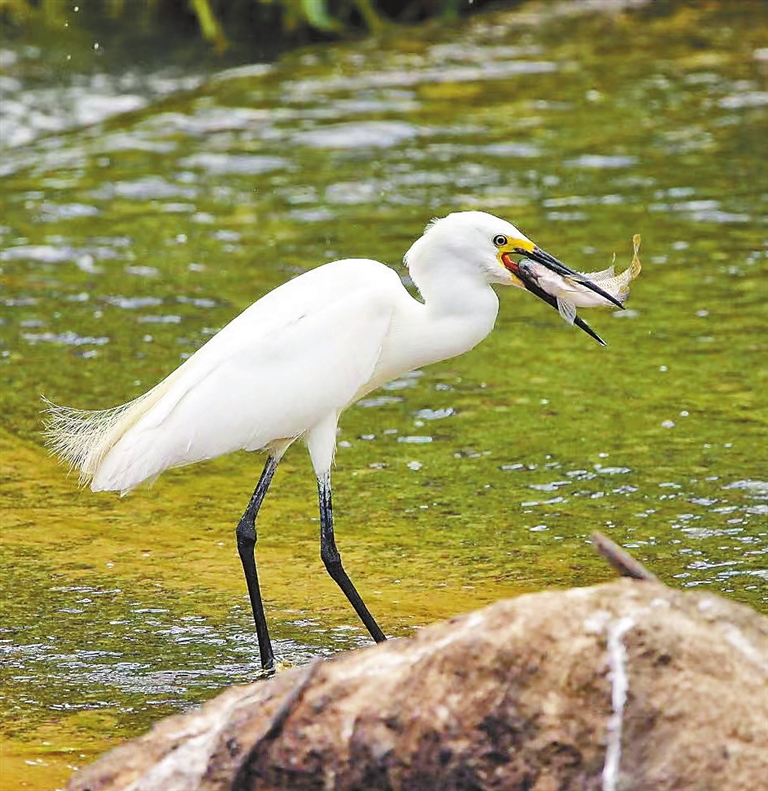
Of all the bird species you can find in Shenzhen, probably the one every citizen or visitor has seen at least once is the little egret (Egretta garzetta). This species can be found on almost every continent of our world. The little egret can reach a height of up to 65 cm and a wingspan of up to 104 cm. Its main feature lies in its beautiful thin white body; although it has darker variations, it is the white color that stands out. Its long narrow neck speaks only about its elegance and beauty. The legs are long and black, and the feet are yellow but become dark during courtship. During the breeding season, the plumage gets more abundant and bushier on the crest and the dorsal part of the body. A fascinating characteristic of the little egret is the coloration of their beaks and lore (the space between the eye and the beak), which show a wide variety of striking colors. During the non-breeding season, the lore is dark gray or even light blue, but it can become pink or red during the breeding season. This fascinating bird enjoys open areas of wetlands, with shallow waters regardless of salinity. They are found around rivers, lakes, estuaries and ocean shores, but also in floodplains, rice paddies, or even dry fields. Little egrets are opportunistic and love taking advantage of any favorable situation across the city, finding places with abundant prey. They can feed on almost any animal, from snakes to fish and from crustaceans to frogs, or insects, spiders, mollusks, and even rats. The little egrets’ breeding season starts during spring and lasts until the end of summer. The species is monogamous, and females can lay up to six eggs per clutch, which both parents will incubate for three weeks. Nests are built on tree branches, usually alongside those of the night herons. Let’s enjoy this beautiful bird in our city and help prevent the loss of its habitat, for a healthy future for our ecosystem. | 
